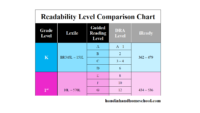Watching a child struggle to learn how to read can be frustrating for parents. How is it possible, then, for a school to test a child – acknowledge that the child is not reading at grade level – and then say that no learning disability is present?
Before dyslexia, or any learning disability, can be diagnosed, a number of criteria must be ruled out. Under the Individuals with Disablities Act (IDEA), the exclusion list includes:
Please follow and like us:
Last modified on April 14, 2020




